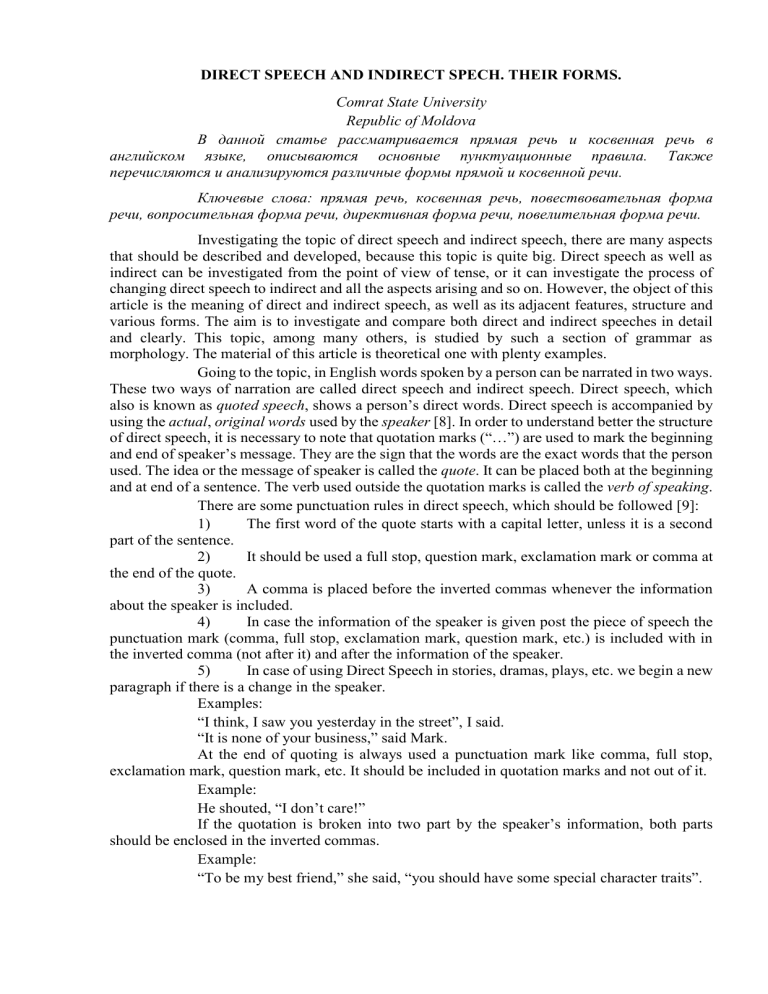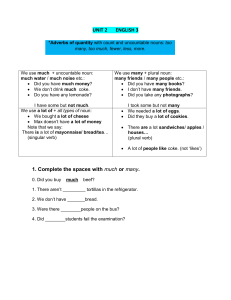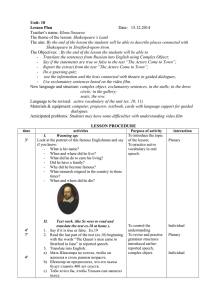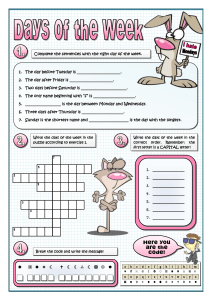
DIRECT SPEECH AND INDIRECT SPECH. THEIR FORMS. Comrat State University Republic of Moldova В данной статье рассматривается прямая речь и косвенная речь в английском языке, описываются основные пунктуационные правила. Также перечисляются и анализируются различные формы прямой и косвенной речи. Ключевые слова: прямая речь, косвенная речь, повествовательная форма речи, вопросительная форма речи, директивная форма речи, повелительная форма речи. Investigating the topic of direct speech and indirect speech, there are many aspects that should be described and developed, because this topic is quite big. Direct speech as well as indirect can be investigated from the point of view of tense, or it can investigate the process of changing direct speech to indirect and all the aspects arising and so on. However, the object of this article is the meaning of direct and indirect speech, as well as its adjacent features, structure and various forms. The aim is to investigate and compare both direct and indirect speeches in detail and clearly. This topic, among many others, is studied by such a section of grammar as morphology. The material of this article is theoretical one with plenty examples. Going to the topic, in English words spoken by a person can be narrated in two ways. These two ways of narration are called direct speech and indirect speech. Direct speech, which also is known as quoted speech, shows a person’s direct words. Direct speech is accompanied by using the actual, original words used by the speaker [8]. In order to understand better the structure of direct speech, it is necessary to note that quotation marks (“…”) are used to mark the beginning and end of speaker’s message. They are the sign that the words are the exact words that the person used. The idea or the message of speaker is called the quote. It can be placed both at the beginning and at end of a sentence. The verb used outside the quotation marks is called the verb of speaking. There are some punctuation rules in direct speech, which should be followed [9]: 1) The first word of the quote starts with a capital letter, unless it is a second part of the sentence. 2) It should be used a full stop, question mark, exclamation mark or comma at the end of the quote. 3) A comma is placed before the inverted commas whenever the information about the speaker is included. 4) In case the information of the speaker is given post the piece of speech the punctuation mark (comma, full stop, exclamation mark, question mark, etc.) is included with in the inverted comma (not after it) and after the information of the speaker. 5) In case of using Direct Speech in stories, dramas, plays, etc. we begin a new paragraph if there is a change in the speaker. Examples: “I think, I saw you yesterday in the street”, I said. “It is none of your business,” said Mark. At the end of quoting is always used a punctuation mark like comma, full stop, exclamation mark, question mark, etc. It should be included in quotation marks and not out of it. Example: He shouted, “I don’t care!” If the quotation is broken into two part by the speaker’s information, both parts should be enclosed in the inverted commas. Example: “To be my best friend,” she said, “you should have some special character traits”. In the framework of the topic, along with direct speech it is necessary to consider also indirect speech. What indirect speech is and the general issues on expressing indirect speech are presented below. The second way to report the same information as in direct speech is called indirect speech or reported speech. Before proceeding to explain the topic, let us see what Teresa Dobrzynska, the Polish linguist and literary theorist, said about reported speech while researching this topic: “ We have to realise that reported speech represents in fact a kind of translation, a transposition that necessarily takes into account two different cognitive perspectives: the point of view of the person whose utterance is being reported, and that of a speaker who is actually reporting that utterance [4, p.39]”. In indirect speech a person, who is usually different from the person who spoke earlier, reports what was said. The main difference of reported speech from direct is that the message in indirect speech is used without quotation marks. In reported speech, the reader or hearer does not assume that the words are the speaker’s exact words; often they are a paraphrase of the speaker’s words [8]. Compare: Tom asks Antony, “How are you?” Antony replies, “I am very good!” In reported speech it will be looks like: Tom asked Antony how he was. Antony said that he was very good. In the first sentence, in order to change the question to indirect speech is used the reporting verb “asked”. In the second one a statement was reporting, that is why there was used the reporting verb “said”. It should be noted that the usage of word “that” is optional in reported speech [8]. In this way, both variants will be correct: with the word “that” or without it. Below are presented and described in detail possible forms of direct speech and indirect speech. As in many languages, in English each sentence provides some type of information. The sentence can be a statement, a question, a command or request, etc. There are some forms of both direct and indirect speech. They are [1, p.356]: declaratives interrogatives directives exclamatives imperatives Declaratives The first form is called declaratives. A declarative sentence states a fact or an argument and ends with a full stop. An important feature of declarative sentences is that they have a subject that comes before the verb. If the sentence in direct speech is declarative, the object clause reporting it in indirect speech is joined to the principal clause be means of the conjunction that [6, p.469]. It is also called nominal that-clause. The predicate of the principal clause is usually expressed by the verbs to say or to tell. To say is used when the person to whom the direct is addressed is not mentioned in the sentence with indirect speech, whereas to tell is used when the person is mentioned. Example: Direct speech: Looking at Ann he said, “I don’t know what happened.” Indirect speech: a) Looking at Ann he said that he did not know what had happened. b) Looking at Ann he told her (that) he did not know what had happened. The word “that” is often omitted after most of the verbs. Example: I know i can do it! Some verbs also allow infinitive - clauses, it means –ing participle clauses for indirect declaratives. Example: But first he’d had to find out who claimed to be speaking on behalf of the company its executives or the shareholders. Interrogatives Another form of sentences of direct and indirect speech is called interrogatives. As it is known, interrogative sentences ask a question. People meet them every day while speaking with family, friends, coworkers and so on. People always want to know new information, keep up with the latest events, asking, for example, a friend, “How are you?” or if want to know about some situations, they ask “What happened here?”. Children always ask a lot of question, journalists interviewing different personalities and the list of usage of interrogatives can be the long one. There are 4 types of Interrogative sentences [10]: 1. Yes/No interrogatives 2. Alternative interrogatives 3. Wh-interrogatives 4. Tag questions Yes/No questions are simple and response can be ‘yes’ or ‘no’. For example: “Are you ready to go?” Alternative questions provide the choice between two or more things as an answer. For example: „Should I call or email you?” or „Do you want coffee, tea, or soda?”. Wh-questions begin interrogative sentence with such a word like what, who, where, when, whom, whose, etc. The answer usually is open-ended. For example: “Who is it?” Tag questions are questions attached or tagged onto the ending of a declarative statement. For example: “You like roses, don’t you?” Let us see how interrogatives are met in direct and indirect speech. It is important to know that the last type of questions is not used in indirect speech. According to the book “An English Grammar. Morphology. Syntax.” by Cobrina and Corneeva [6, p. 470], in case if the direct speech is a pronominal question then in indirect speech will be used the same pronominal word (pronoun or adverb) as it was used in direct speech. For example: “Who is absent today?” asked Mr Smith. In indirect speech it will be like Mr Smith asked who was absent today. There some important changes for general questions in direct and indirect speech to which all of us should pay attention. I. If the direct speech is a general question, then changing the sentence to indirect speech will be by means of the conjunctions if or whether. In addition, we use these conjunctions after ask, want to know, wonder, not know, didn’t say/tell me. II. The inversion in the direct question changes to statement word order. III. If necessary, the tense can be changed at the same time. Directives This type of sentences is akin to imperatives, but include related functions of instruction, direction and so on. They include commanding, inviting, warning, pleading, suggesting, advising, permitting, requesting, meditating, and expressing wish or imprecation. Many of these sentence types use the verbs let and do in non-standard ways [10]: Let me see. Let's go. Do come in. Don't do that again. When directive sentences are changed from direct speech to reported, the verb is usually subjunctive or it is used with a modal such as should. For example: Direct speech: He says, “Let us pray” Indirect speech: He proposed that they should pray. Using the word suggest allows an –ing participle clause as an indirect request [1, p.359]. For example in direct and indirect speech: 1. Mr. Bennet suggested, “To send drug dealers to military-style camps designed to build self-esteem” 2. Mr. Bennet has suggested sending drug dealers to military-style camps designed to build self-esteem. Commonly indirect directives are infinitive clauses. Let see an example: “The Luisana attorney general and New Orleans district attorney have asked a federal district court to allow them to revive laws making it a crime to perform abortions, punishable by as much as 10 years in prison.” Exclamatives Now it is time to research exclamatives. An exclamatory sentence, sometimes called an exclamation sentence, usually express and represent people’s feelings, strong emotions, excitement or wishes [11]. This kind of sentences have an exclamation mark at the end of them. Exclamation marks are reserved for powerful feelings so you will not find them used to express a matter-of-fact emotion or serenity, or a sense of calm. Exclamatory sentences makes a statement, so to write one it is necessary to write a declarative sentence filled with emotion and use this punctuation mark (!)! However, it is important to be careful and not to overuse exclamatory sentences because they are forceful and create a particular tone. Example: Declarative Sentence: I want to sleep. Exclamatory Sentence: I want to sleep! To produce an indirect sentence from direct one for exclamations it should be introduced by words what or how [1, p.360]. For example: Direct speech: My agent calls me in this morning and says, “I am the best! Can you believe in it? I did this, yes!” Indirect speech: My agent called me in this morning and said how good he was. These exclamatory words are changed into very, greatly, highly, etc. according to the sense of speech. Interjections and exclamation are omitted and its sense is expressed by means of phrases. Below are presented some of interjections and exclamations proposed by Manik Joshi, the author of the book “Direct and Indirect speech. English speaking.”[2, p.33]: ach (expresses “sorry, surprise”) “Ach, what a wonderful gift!” aha (expresses “pleasure, understanding”) “Aha, what a match it is!” bingo (expresses “pleasure, surprise”) “Bingo! I won!” bravo (expresses “enjoyment”) “Bravo, You took the first place in the competition!” damn (expresses “disappointment”) “Don't waste time, damn it!” oops (expresses “embarrassment, something went wrong”) “Oops, I didn't see you there.” wow (expresses “admiration, surprise”) “Wow! You look fantastic!” yum (expresses “nice taste or smell”) “It smells so tasty, yum!” Imperatives The last form is imperative sentences, which represent command, suggestions or request. Like exclamatives, imperatives also have exclamatory mark at the end of the sentences in direct speech, however not always. It depends on what sentence represents. When it is changed to indirect speech, an exclamatory mark is omitted. An order or request in indirect speech is expressed by the infinitive [5, p.96]. If there are more than one object like a noun or a pronoun in the quote that denotes the person to whom the order or request is addressed, it is supplied. This object is the compulsory component in the sentence structure. In case if command or request is without a concrete person in direct speech, it is to be supplied from the previous context or from the speech situation. There some verbs of inducement that are used in indirect speech in imperatives and they are as follows: to tell, to order, to ask, to beg, to command, to urge, to implore [5, p.96]. Examples: Direct speech: I said to Peter, “Open the window, please”. Indirect speech: I asked Peter to open the window. If the predicate of the imperative sentence is negative, the negation not is placed before the infinitive in indirect speech. Direct speech: “Don’t ever enter this room,” said mother to the children. Indirect speech: Mother warned the children not to enter the room. To make a short conclusion it is possible to say that direct and indirect speech were described and it is now clear what both mean. According to the rules of punctuation now, it is possible to write correctly sentences in direct and reported speech. It is known that direct and indirect speech appears under a few concrete forms such as declaratives, interrogatives, directives, exclamatives and imperatives. Each of these five forms has its own meaning, setting and appointment in speech. It was shown by examples how each of form was changed from direct to indirect speech and how it looks. In order to develop this theme widely and material turned out to be reliable, were used books of different authors such as American, Polish and Russian. By the way, this article will be useful either for teachers, tutors in schools, colleges and universities or for pupils and students. Furthermore, this grammatical guide can help those, who want to study this topic independently and to enlarge his/her knowledge in English. References 1) Greenbaum S. Oxford Reference Grammar. – Published in the U.S. by Oxford University Press Inc., New York, 2000. – 419 p. 2) Manik Joshi Direct and Indirect Speech: English speaking, 2011. – 63p. 3) Melenciuc D., Onofreiciuc E., Fabian E., English for High School, 2 ed. revis. – Chisinau, 2000. – 400p. 4) Stroinska M., Relative points of view: linguistic representations of culture – New York, Oxford, Berghahn Books, 2001. – 223p. 5) Дроздова Т.Ю., Берестова А.И., Маилова В.Г. English Grammar: Reference and Practice. – СПб.: ООО «Издательство Химера», 2000. – 360с. 6) Кобрина Н. А., Корнеева Е. А., Оссовская М. И., Гузеева К. А. Грамматика английского языка морфология. синтаксис., – СПб.: «Издательство Союз», «Лениздат». – 2000. – 496 с. Internet links 7) https://english.tutorvista.com/grammar/direct-and-indirectspeech.html 8) https://www.youtube.com/watch?v=AdN2gv5nk-E 9) https://www.youtube.com/watch?v=FCfTXBcnbS4 10) http://www.k12reader.com/interrogative-sentences/ 11) http://www.k12reader.com/exclamatory-sentences-rock/


